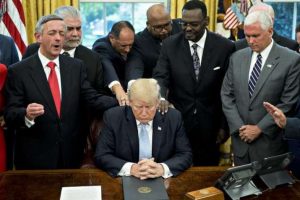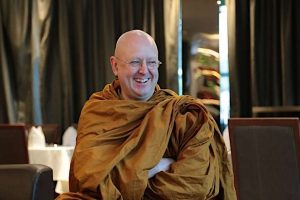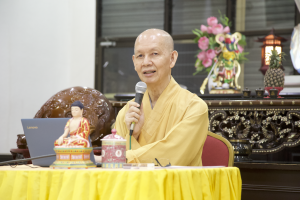Better than a thousand verses, comprising useless words
is one beneficial single line, by hearing which one is pacified. (Thera, 96)
Hong Kong is one of the busiest, most densely populated cities in the world. Its inhabitants, seemingly forever occupied with work and endless distractions, have little time to stand and stare. Yet despite the constant hustle and bustle, many Hongkongers somehow find time to study and practice Buddhism. Although most are more familiar with the Mahayana and Vajrayana Buddhist traditions, there is another that has taken root in the city and caught their attention—Theravada Buddhism.
In modern times, Theravada Buddhism first caught the attention of Hongkongers in the 1970s through the efforts of the Hong Kong Buddhist Sangha Association under the leadership of Venerable Sik Sai Chan. But it was only with the introduction of its meditative practices in the 1990s that people began to take a serious interest in the Theravada teachings. Since then, we have seen encouraging growth, although it remains a minority tradition mostly practiced by immigrants to Hong Kong from predominantly Theravada countries such as Myanmar, Sri Lanka, and Thailand. Interestingly, however, we are also seeing interest from a growing number of native Hongkongers.
One of the first institutions to encourage the systematic study of Theravada Buddhism in Hong Kong was the Centre of Buddhist Studies (CBS) of the University of Hong Kong (HKU), established in 2000, through its non-sectarian approach to Buddhist studies.* Be they lay or monastic, students accepted by CBS for the master’s degree program are taught all Buddhist traditions—Theravada, Mahayana, and Vajrayana—systematically and academically by highly qualified lecturers and world-renowned Buddhist professors. When I did my master’s degree at CBS in 2013, I was pleasantly surprised to find many lay students dedicated to Buddhist studies. Indeed, this was the first time at any course I had enrolled in that lay students outnumbered monastics.
Each year, hundreds of students apply to CBS to take the Buddhist Studies MA program, but it is the monastic students with their yellow, saffron, or grey robes who draw the attention of the local and international students on campus. Initially, many HKU students found it strange to see monks among them. Once, for example, when a group of us were walking to lunch, a student came running up and asked whether we were also students of the university. By now, however, monks have become a fairly common sight on campus.
Outside of CBS, several prominent monks have also contributed significantly to the rise of Theravada Buddhism in Hong Kong. One of them is Venerable Dr. Dhammapala, a Theravada monk from Malaysia. After completing his doctorate at HKU, he worked as the chief editor and spiritual director of Buddhistdoor Global.** While there, he conducted classes in Theravada Buddhism and performed religious ceremonies for devotees. He also led HKU students and alumni on visits to the four most important sites for Buddhists: Lumbini in Nepal, and Bodh Gaya, Sarnath, and Kushinagar in India. Through these efforts, Ven. Dhammapala has helped Buddhists strengthen their understanding and attracted new devotees. After retiring from Buddhistdoor, Ven. Dhammapala went back to Malaysia, although he has since returned to Hong Kong to set up the Centre of Mindfulness.
Another monk who has done much to promote the Theravada tradition is Ajahn Brahm, a noted monk and teacher. He comes to Hong Kong every year to organize retreats and Dhamma talks, which are hugely popular with many followers. A charismatic speaker and practitioner, he has attracted many newcomers from Hong Kong and elsewhere to Theravada Buddhism. Ajahn Brahm’s most senior disciple, Ajahn Brahmali, also visits Hong Kong annually to conduct sutta and meditation retreats.*** Having studied at Bodhiyana Monastery in Australia after listening to Ajahn Brahma’s Dhamma teachings, he became an exceptional student, mastering the Pali language and the suttas.
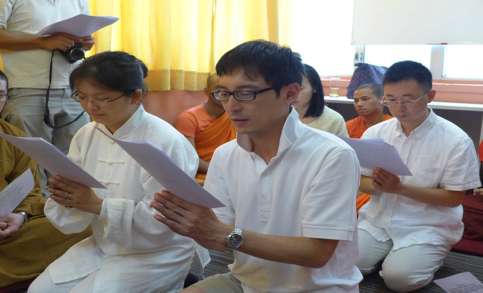
We could not discuss Theravada Buddhism without mentioning Ven. Prof. K. L. Dhammmajoti’s extensive contribution. An erudite scholar and practitioner, he taught at CBS for 12 years. His profound knowledge of Theravada and Mahayana Buddhism—there are few scholars who can successfully straddle both traditions—has garnered a following among his former students. After he retired from HKU in 2014, Ven. Dhammajoti continued to propagate Buddhism by opening the Aloka Vihara in a flat offered by a pious female devotee (upasika), where he holds weekly Pali devotional chants for lay followers. To ensure the devotees understand what they are chanting, Ven. Dhammajoti patiently explains the meaning of the Pali words one by one. It always brings him delight when followers share that they have found peace of mind from these chanting sessions.
Although these sessions initially attracted few followers, quite a number have since expressed a wish to take refuge in the Theravada tradition. Taking refuge in the Buddha, the Dhamma, and the Sangha means one commits to following the teachings of the Buddha. Most recently, some 10 students took refuge in the Theravada tradition.
As interest in Theravada Buddhism grew, Ven. Dhammajoti decided to open the Buddha-Dharma Centre of Hong Kong to facilitate non-sectarian Buddhist academic study, offering an MA program first in English and later in Chinese under the auspices of the University of Kelaniya, a renowned Sri Lankan Buddhist university. As director of the Buddha-Dharma Centre, Ven. Dhammajoti aims to promote Buddhism through a systematic and holistic approach, and a strong belief that faith and intellectual studies must be integrated if followers are to truly understand Buddhism.
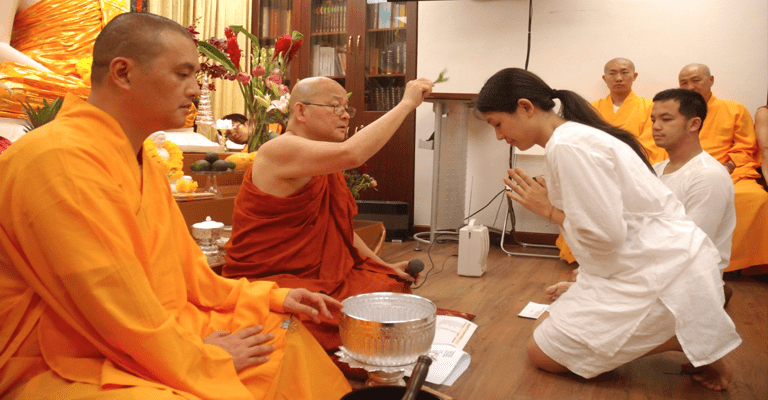
Ven. Dhammajoti consistently stresses that his outlook is non-sectarian, however he believes that for a non-sectarian approach to be truly meaningful, Buddhists must first develop an objective historical perspective of the Buddha’s teachings. He has spoken on several occasions on the need to sincerely discover what he terms “archaic Buddhism,” rather than Theravada, or any other “vada.” Ven. Dhammajoti clarifies that he is emphasizing the early Buddhist teachings by promoting awareness that all Buddhist teachings ultimately have their roots in Indian Buddhism, comparatively best preserved in the Pali and agama scriptures.
A similar committed standpoint has been advocated by the modern Chinese scholar and monk Ven. Yin Shun, who has spent years studying Chinese agama doctrines as well as the Pali texts (through Japanese translations), and has published influential scholarly works, including: An Introduction to the Buddha-dharma (an exposition on the early Buddhist doctrines), and The Compilation of the Primitive Buddhist Canon. Ven. Yin Shun’s emphasis through these works on the need to return to Indian Buddhism has inspired many young Chinese Buddhist readers. From this perspective, he should also be highlighted as a modern teacher who has contributed significantly to the study and practice of early Buddhism among Chinese Buddhist intellectuals, including Hongkongers.
Another who has helped to promote the Theravada faith is CBS graduate Sigiriye Sumiththa Thero. In 2016, he established the Sri Lanka Buddhist Culture Centre in Hong Kong to provide a temple for the Sri Lankan Buddhist community to practice.

Although the Theravada tradition is not yet firmly established among Hongkongers, they are growing in number. Lay and monastic groups alike have founded several small meditation centers in Hong Kong. The Dhamma Muttā Centre, for example, was established in 1991 on Lantau Island for people to practice Vipassana meditation as taught by S. N. Goenka. Another center, the Hong Kong Insight Meditation Society, was founded by a group of lay Buddhists. U Sasana, a venerable monk from Myanmar who has been living in Hong Kong for more than 20 years, has opened a center in Tsim Sha Tsui called the Sasana Yanthi, catering to those interested in Theravada meditation and practices. Myanmar’s consul-general Zaw Zaw Soe has also helped to promote Buddhism by allowing people to celebrate Buddhist festivals at his office.

Also notable among Hong Kong’s foreign community, Thai Buddhists have more temples than any other minority group. Among them is Wat Tai Wo, also known as Wat Methumvanaram, in Tai Po District, notable for its beautiful, verdant forest setting.****
It is worth remembering that the growth of Buddhism worldwide is made possible by the diversity and richness of its traditions—Mahayana, Theravada, and Vajrayana. Lest we forget, we should be reminded that though the form or tradition may differ, the underlying common goal—liberation from suffering—is the same. When we practice Buddhism, we should seek to forget nationality and cultural prejudice; it is when we succeed in breaking down such barriers that we can effectively learn to gradually shed our ego.
In conclusion, we can say that through academic institutions and Buddhist centers, the monastics and lay followers who study and practice early Buddhist teachings all play a role in the propagation of Theravada Buddhism in Hong Kong. The Buddha said, “Drop by drop is the water pot filled,”***** and in the same way, small efforts by Buddhists will facilitate the spread of Theravada Buddhism in Hong Kong.
* http://www.buddhism.hku.hk/director_message.htm
** http://myba.my/faculty/ven-dr-dhammapala/
*** http://www.buddhistdoor.com/ajahnbrahmalis2016/
**** http://www.thaiworldview.com/hongkong/thai/taiwo.htm
***** https://www.accesstoinsight.org/tipitaka/kn/dhp/dhp.09.budd.html#dhp-122
References
Thera, Narada. 1993. The Dhammapada: Pāli Text And Translation With Stories in Brief & notes. 4th ed. Taipei: The Corporate Body of the Buddha Educational Foundation.
See more
The Hong Kong Buddhist Sangha Association
Centre of Buddhist Studies, The University of Hong Kong
Centre of Mindfulness (Facebook)
The Buddha-Dharma Centre of Hong Kong
Sri Lankan Buddhist Cultural Centre in Hong Kong
Dhamma Muttā (Vipassana Meditation Center Hong Kong)
Hong Kong Insight Meditation Society
Related features from Buddhistdoor Global
Preserving and Protecting the Buddhist Heritage of Laos
The Five Mental Hindrances
When Catholics Reach Out: Perspectives of the Order of Discalced Carmelites on Dialogues with Buddhists


